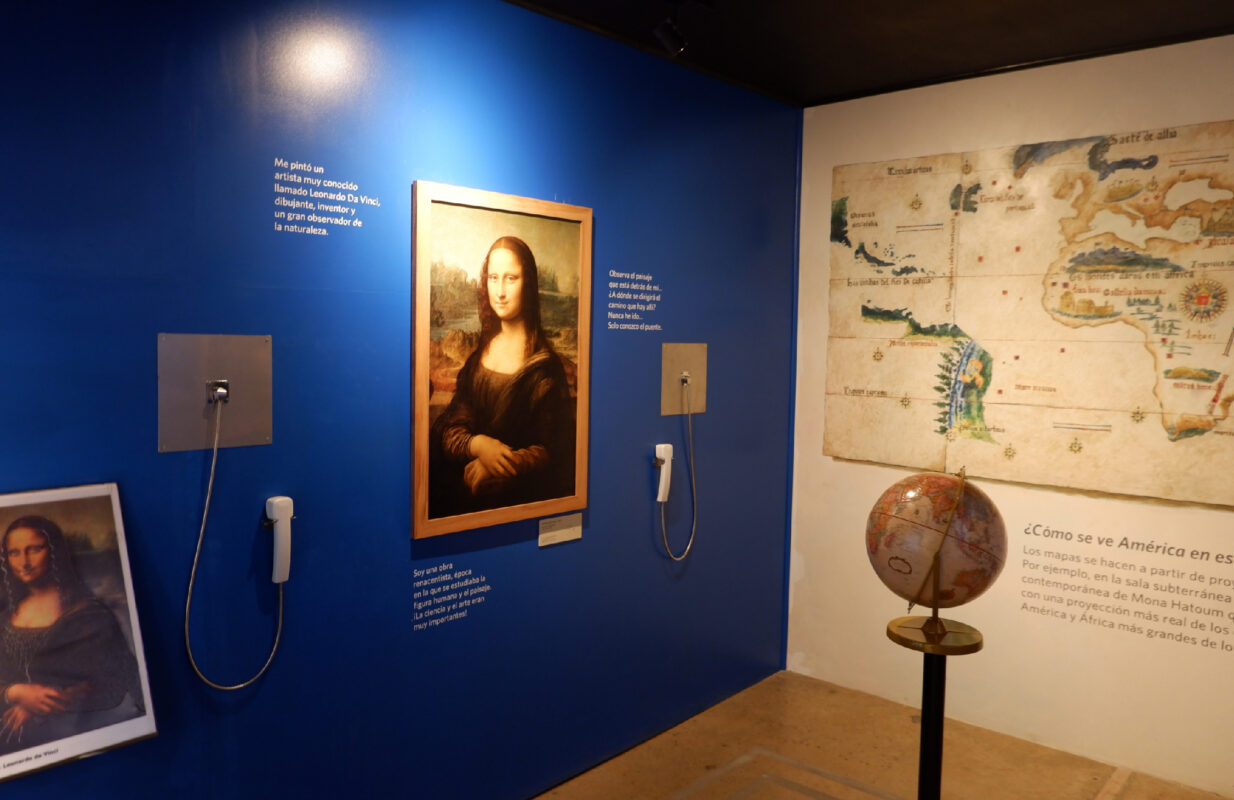Today, the educational museum has accessible spaces for wheelchair users, educational programs for children with intellectual, visual, and hearing disabilities, and sensitive spaces that allow access for everyone.
ABOUT ARTEQUIN VIÑA DEL MAR
Artequin Viña del Mar is an educational museum devoted to bringing children closer to the history of art through a participatory and playful methodology that is complemented with reproductions of works of art. For 13 years, the museum has held group visits for students, weekend workshops for people of all ages, vacation workshops, technical workshops for children, young people and adults, courses for teachers and different didactic experiences, promoting art history knowledge, generating dialogues on patrimony, and linking art education and socially relevant issues.
The museum’s collection of reproductions includes representative works of fundamental artists in the history of Western, national, and Latin American art. Since its inception, Viña del Mar Artequin Museum has received more than 405,000 visitors (September 2008-March 2020), developing a large number of artistic mediation programs and projects with artistic and social institutions in the area. In addition, given its educational work, it has received the Ibermuseums Education Awards three times (2014, 2016, and 2020).
In 2019, the museum undertook a complete renovation of all its rooms in search of a sensitive, inclusive, coherent, and innovative museography. Sensitive: to explore and experiment with the senses; inclusive: to have a universal design and be accessible; coherent: to maintain a unified visual language; and innovative: to be at the forefront of educational methodologies.
In the context of COVID-19 confinement, the museum has developed different online activities, engaging participants in virtual workshops in different formats.

MISSION
To generate experiences of artistic education for the public, particularly children, through interactive, creative, and playful methodologies that provoke emotions, sensations, and reflections in our visitors in a quality, welcoming, inclusive, and entertaining environment.


Curatorial definitions
Artequin Viña del Mar is a museum designed for children; therefore, many of its activities are childhood-oriented, developing programs in which kids can be the protagonists and express themselves in a safe space, seeking to make them perceive the museum as a place for participation and dialogue. We consider art education as a tool that allows us to think and understand the world and people, to develop critical thinking, to establish sensitive and respectful relationships. Moreover, we believe art education is one of the most comprehensive tools for developing human rights learning. Topics that are generally complex for people, such as gender, discrimination, identity, distribution of power, among others, are possible to work with children through art history and museum methodologies because «problematizing the contents, asking about absences, questioning the social order, with the aim of preparing the critical sense in front of knowledge, is an exercise that must begin in early childhood» [Irene de la Jara, 2018. Adultcentrism and gender as negators of children’s culture].
Inclusion approaches
We consider diversity of people as an opportunity that enriches any environment. We also perceive that among children of all ages, there is a wide diversity; therefore, it is essential that the museum responds to the different needs of its visitors, especially those who have had fewer opportunities and/or have been historically excluded from normative contexts. The museum’s activities and actions are designed according to a rights-based approach, especially for children. Thus, participation is fundamental, as well as the recognition and appreciation of their opinions and needs. They are also designed and implemented with a gender approach: since 2015, we seek to promote the development of women artists throughout history, we invite children and families to reflect on socially imposed gender roles, and we emphasize that girls and boys have the same capabilities; therefore, should have equal opportunities. In addition, we understand the difficulties people with disabilities face in terms of education access. In this regard, the most important action is the renovation of the museography made in 2019, which incorporated sensory elements to the room tours, such as audio, objects with textures, olfactory elements, tactile reproductions for blind people and access ramps.

Credits
English translation by Diana Jaque and Marco Rojas, students of the Translation and Interpreting program at Universidad de las Américas.








